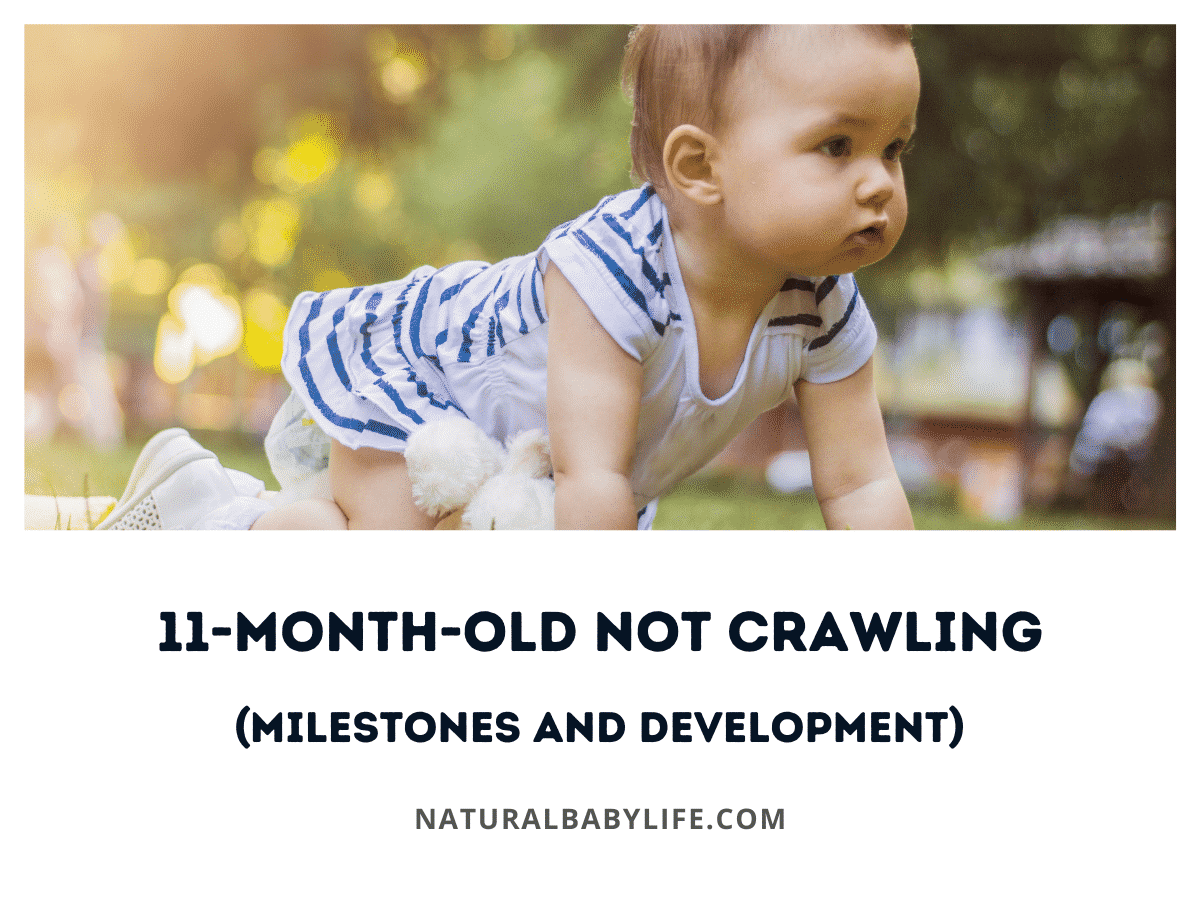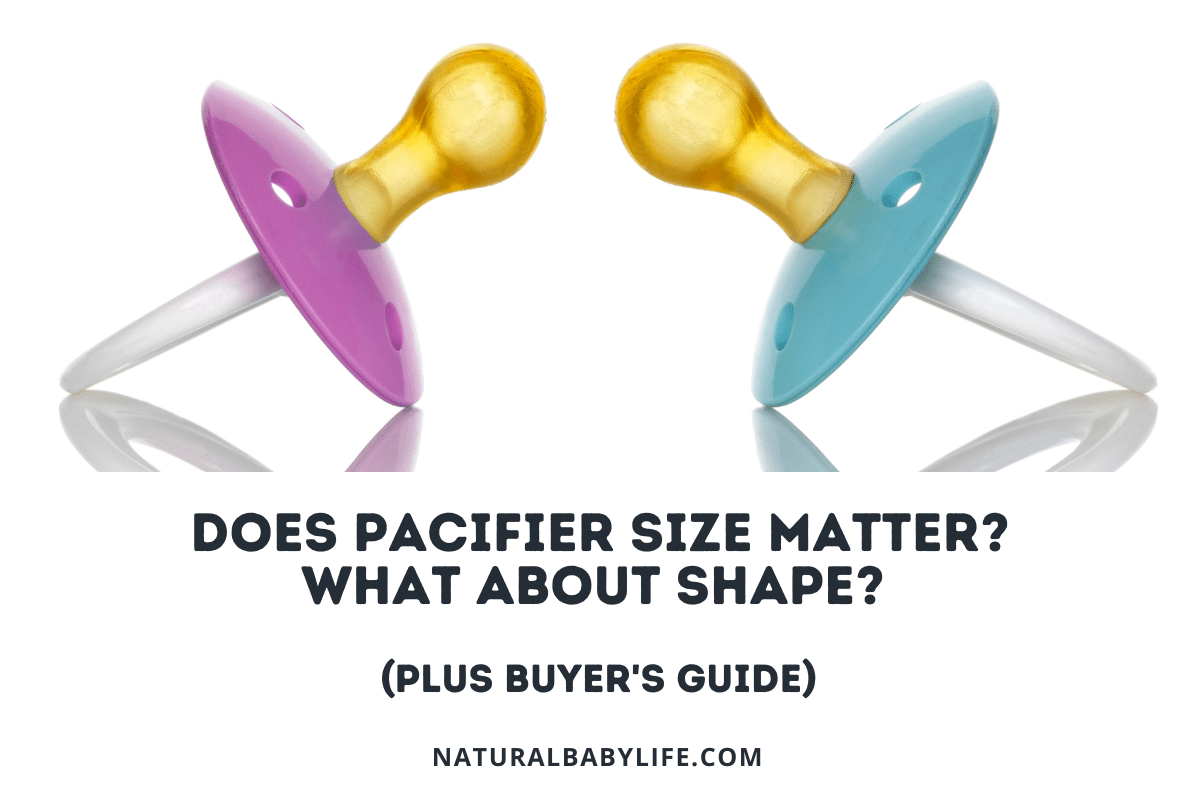As a parent, you may feel overwhelmed by all the information and advice you receive. If your 11-month-old is not crawling yet, you may feel worried that something is wrong. More than likely, your baby is just kicking back and taking their time.
On average, babies start crawling between 8 and 10 months of age, but each baby is different. If your baby hasn’t started crawling by 11 months, try activities to help strengthen and encourage your baby, including providing 30-60 minutes of tummy time daily. Be sure to talk to your pediatrician if you have concerns about your baby’s development.
Read on for more information about when and how babies learn to crawl. Find out how you can help and encourage your baby to start crawling quicker.
Table of Contents
When do babies normally start crawling?
Your friends’ babies may already be pulling up and cruising at 11 months old. This may cause you to become anxious that your child is delayed in some way. It’s a natural fear, but most often this is not the case.
According to a study by the World Health Organization (2006), about 50% of babies begin crawling around the age of eight months. Some babies skip crawling altogether and go straight to pulling up and walking. Learning to crawl takes a lot of new skills. Giving your baby more time on their belly may encourage them to crawl sooner.
The American Academy of Pediatrics (APA) encourages using trackers and well-child visits to discuss any concerns about development with your baby’s pediatrician. Use the milestones as a general guide, but remember to also trust your gut.
Signs a baby is ready to crawl
Babies will exhibit some tell-tale behaviors when they’re getting ready to crawl.
Watch for them to:
- Start rolling from their back to their tummy and vice versa.
- Maneuver into a sitting position from being on the tummy.
- Get on hands and knees and rock back and forth.
- Try pulling themselves with arms only first (commando/army crawling).
All of these are signs that your baby is building the strength and coordination to begin crawling.
Is it okay if your 11-month-old isn’t crawling?
Some babies crawl earlier than others. Temperament can have a lot to do with this. Some babies are really curious and motivated to move around. Others are content with being more laid back and playing where they are.
When your 11-month-old is crawling or not, it doesn’t mean there’s anything wrong. If your child is lifting their head and looking around, pushing up on their arms, and can sit up unassisted, they are likely just taking their time. If you’re concerned or see delays in other areas of development, talk to your baby’s pediatrician.
The “Back to Sleep” campaign that was instituted in the early 90s meant that babies were placed on their backs to sleep as prevention for SIDS. This meant less time on the tummy. As a result, many babies are now crawling later or even skipping it altogether.
Babies may also begin crawling in some unconventional ways. While not necessarily considered bad, these types of crawling should be gently corrected so that babies are developing both sides of the body equally.
11-month-old is crawling with only one leg
Sometimes when babies start learning to crawl, they get creative.
If you notice your baby crawling using only one leg, this is asymmetrical crawling. Asymmetrical crawling means they are developing only one side of the body.
This can have an impact on the strength, vision, and coordination of both sides of the body.
11-month-old scooting not crawling
Bottom scooting is another way babies can begin to crawl.
Instead of hands and knees crawling, your baby may scoot on their bottom in a sitting position and pull with their hands or heels on the floor for movement. This style of crawling limits neck, shoulder, abdominal, and hip muscle strength and cause uneven muscle development.
Add obstacles to the area where your 11-month-old is scooting. Encourage them to find new ways to move around the obstacles that will help them learn to four-point crawl.
11-month-old commando crawling
Army or commando crawling normally appears just before crawling on the hands and knees. About 50% of babies will commando crawl before moving to the more expected four-point crawling.
Commando crawling is when babies keep their tummy on the floor while pulling themselves forward with hands and knees. Usually, babies that commando crawl will quickly transition to four-point crawling within a couple of weeks.
Prolonged commando crawling results in disuse of both the legs and the core. Encourage your baby to transition to four-point crawling by showing them how to rock back and forth on their hands and knees. Support their tummy with your hand, keeping it off the floor.
11-month-old bear crawling or crawling on hands and feet
Bear crawling, like commando crawling is a natural precursor to four-point crawling. Some babies use bear crawling as their primary form modality before walking.
Babies who bear crawl keep their elbows and knees straight while walking on their hands and feet like a bear. Many times it’s the stage right before they learn to stand.
It’s important that babies learn to crawl using the four-point or hands and knees style. Without it, they can miss out on important benefits to their development.
To correct these types of crawling, place obstacles such as pillows in your baby’s path. Let them figure out new ways to get around the obstacles. This encourages a more symmetrical approach to crawling than the above methods.
How to help an 11-month-old start crawling
Even though some babies never crawl before walking, it’s still best to encourage them to crawl first. Remember to childproof your home before your 11-month-old starts crawling. Also, remove any choking hazards from the floor before tummy time.
Here are some ways you can help your 11-month-old learn to crawl:
- Give baby lots of tummy time
- Prop baby on a raised surface (like a pillow)
- Make it a play date
- Use a mirror
- Use an activity table
- Play in a crawl-through tunnel
- Play with motorized toys
Crawling helps develop gross and fine motor skills, balance, and coordination. It also encourages the eyes and both sides of the brain to work together. These skills help later with running, jumping, writing, fastening clothes, and throwing balls.
Give baby lots of tummy time
The more tummy time your baby has, the quicker they strengthen their muscles for learning to crawl.
Pediatricians recommend giving your baby at least 30-60 minutes of tummy time every day. This time can be broken up into several sessions of a few minutes each.
Some pediatricians even recommend starting tummy time with newborns a couple of weeks after coming home from the hospital. Putting babies on their tummy for a few minutes before each diaper change helps get them used to it earlier.
Prop baby on a raised surface
Prop your baby up on a raised surface such as a pillow with their tummy flat on the pillow, arms up, and knees on the floor.
This helps stabilize hip muscles making it easier to learn to crawl.
Make it a play date
If your baby seems to hate tummy time, make it a play date with mom or dad.
Get on the floor with them and show them how it’s done. Babies love to mimic you. Be encouraging and give lots of praise.
Offer them a toy just out of reach and encourage them to stretch for it.
Use a mirror
Put a mirror flat on the floor during tummy time so your baby can look at themselves.
Prop the mirror up a short distance away and encourage them to crawl toward it to see themselves.
Babys are naturally curious, so when the mirror is out of reach and upright where they can see it, it will encourage them to crawl toward it.
Use an activity table
Use an activity table with a removable top.
Remove the top and lay or prop against a sturdy surface just out of baby’s reach.
Encourage them to crawl to it and explore the activities.
Play in a crawl-through tunnel
Sometimes, babies get distracted. Using a crawl-through tunnel can help your baby focus on the activity of crawling.
Put a couple of cherished or interesting toys inside the tube. From the other end, you can encourage them to crawl into the tube to their favorite items.
Play with motorized toys
Crawling toys like this motorized snail are great for encouraging your baby to give chase.
This toy rolls and spins his shell as his head moves side to side. Colorful movement catches your baby’s attention and spurs curiosity, making him want to catch it.
It can be stressful if your 11-month-old isn’t crawling, but trying a few simple things could help. Realize too that not all babies crawl, and that’s okay. Soon they’ll be cruising around and you’ll be so busy chasing after them, you won’t remember that it took them just a little longer to get there.










